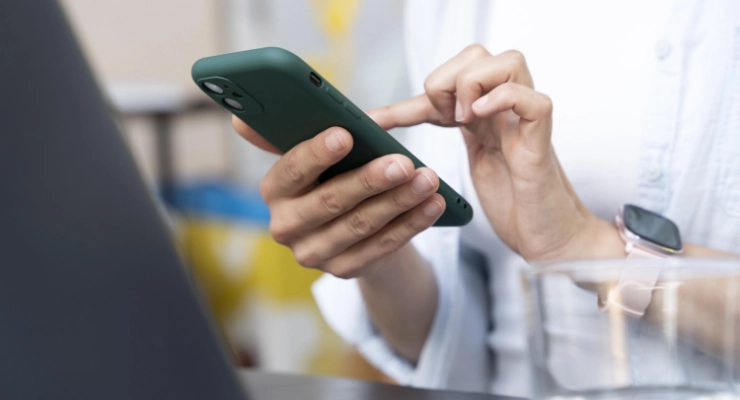In Los Angeles, first impressions matter. From dining out to booking services, Angelenos pay attention to details others might overlook. The same is true for healthcare: the way your clinic answers the phone can either build confidence or send patients running to a competitor.
Phone etiquette might sound simple, but to patients, it’s loaded with meaning. They’re not just listening to your words; they’re interpreting tone, timing, and professionalism. In a competitive city where healthcare choices are abundant, these small details can have a big impact.
Here are three surprising ways LA patients are sizing up your clinic based on how you handle calls.
1. Speed of Answer = Respect for Their Time
Los Angeles is a city defined by traffic and packed schedules. When patients call, they’re already fitting that call into a busy day. Long hold times or endless ringing are taken personally—patients often feel it reflects how much you value their time.
Consider this: a patient who spends 30 minutes in traffic just to reach an appointment expects efficiency at every step. If the phone experience doesn’t match that expectation, they assume the in-office care won’t either.
Even after hours, patients notice how quickly calls are picked up or returned. A slow response suggests disorganization, while a prompt, calm answer communicates that the clinic is dependable and ready to help.
A
Velaro survey revealed that
60% of people will hang up if left on hold for more than one minute. In a city as competitive as Los Angeles, those hang-ups often translate into lost patients. On the flip side, quick response times build a reputation for reliability—something patients talk about and recommend.
2. Tone and Energy Reveal Professionalism
Patients are remarkably attuned to tone. In fact, research shows that people often remember
how something was said long after they forget the actual words. A warm, attentive voice builds trust, while a rushed or distracted one can erode it instantly.
Tone matters because healthcare is an emotional experience. Patients are often calling while anxious, in pain, or uncertain. A compassionate, steady voice reassures them that they’re in good hands. Conversely, a curt greeting or monotone voice can make patients feel like they’re a burden.
A study published in the
Journal of Patient Experience found that
38% of patients consider staff attitude and friendliness just as important as clinical skill. That means even if the doctor is excellent, patients may still leave if phone interactions feel cold or unwelcoming.
In a city as diverse and image-conscious as Los Angeles, tone becomes part of your clinic’s brand. A welcoming voice over the phone reflects professionalism and care before the patient ever steps inside your doors.
3. Consistency Shows Reliability
One of the most overlooked aspects of phone etiquette is consistency. Patients pay attention to whether they receive the same level of courtesy no matter when they call or who answers.
If one call is answered cheerfully and another brusquely, patients begin to wonder about the clinic’s reliability. Inconsistent phone etiquette sends the message that care might also be inconsistent—a red flag in a field where consistency is literally life-saving.
A
PwC Health Research Institute survey found that
82% of patients say quality customer service is the most important factor when choosing a healthcare provider. That means patients are judging not just medical care but the entire experience—including the tone of a receptionist’s voice and the length of a hold time.
For Los Angeles clinics, where word-of-mouth spreads quickly and online reviews carry significant weight, consistency in phone etiquette can make or break reputation.
Why Patients Judge So Closely
In Los Angeles, patients have no shortage of options. They can choose from dozens of clinics, specialists, and urgent care centers within a few miles. This abundance of choice makes them more discerning.
Think about it: if a patient has a negative phone experience—long wait times, unfriendly tone, or confusing information—they don’t have to tolerate it. They can call the next clinic down the street. And often, they do.
According to a
Software Advice survey,
35% of patients say they have switched providers specifically due to poor customer service. That’s more than one in three patients lost not because of medical errors, but because of bad communication.
The phone, then, isn’t just a communication tool—it’s the gateway to trust. It’s where patients decide if your clinic feels welcoming, competent, and worth their loyalty.
Raising the Bar
Improving phone etiquette doesn’t require a complete overhaul—it requires mindfulness. Training staff to answer promptly, maintain an empathetic tone, and ensure consistent professionalism goes a long way. But many clinics struggle to keep this level of service steady, especially after hours.
Some steps to consider:
- Track response times. Even small improvements can reduce patient frustration.
- Offer bilingual service. LA’s diverse population demands it—over 50% of households in the county speak a language other than English.
- Role-play scenarios. Practice common patient calls so staff can respond with confidence.
- Monitor tone. Occasional call reviews can help staff hear how they sound to patients.
But for many clinics, the real challenge is sustaining these standards at all hours. That’s where a
medical answering service in Los Angeles can help. Professional operators trained in healthcare communication can keep phone etiquette consistent—whether it’s 2 p.m. or 2 a.m.
Final Thought
Patients may not consciously articulate how much phone etiquette matters—but they feel it. In a city where reputation is everything, the smallest details can make the biggest difference. Every ring, every tone, and every greeting is an opportunity to reinforce trust.
For LA clinics, mastering phone etiquette isn’t optional—it’s essential. Handle it well, and you’ll earn loyalty that lasts. Handle it poorly, and patients will quietly move on.





